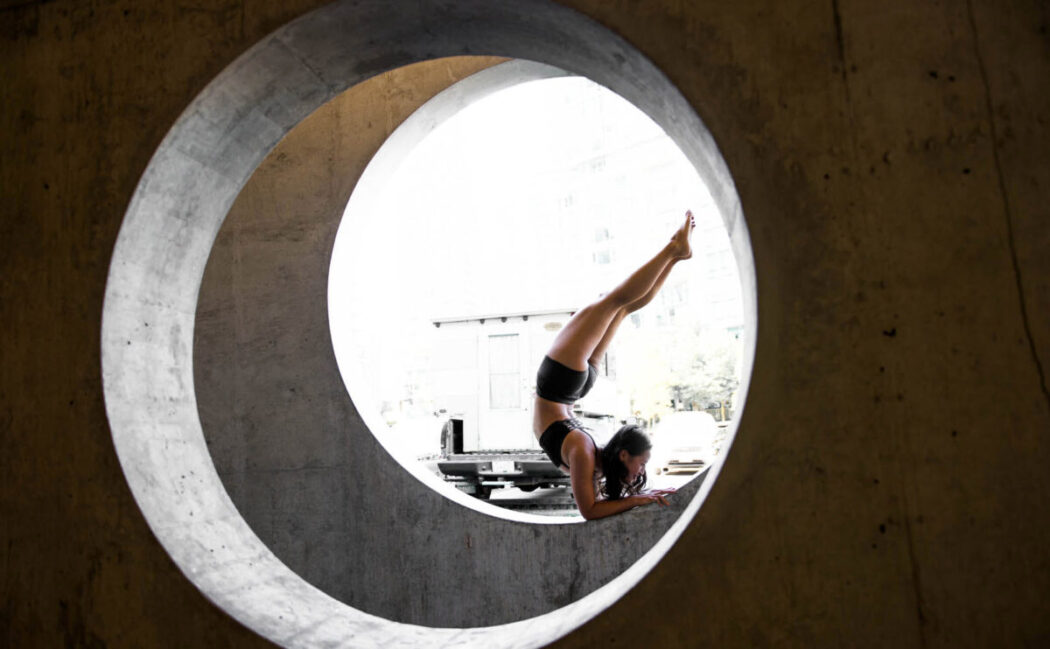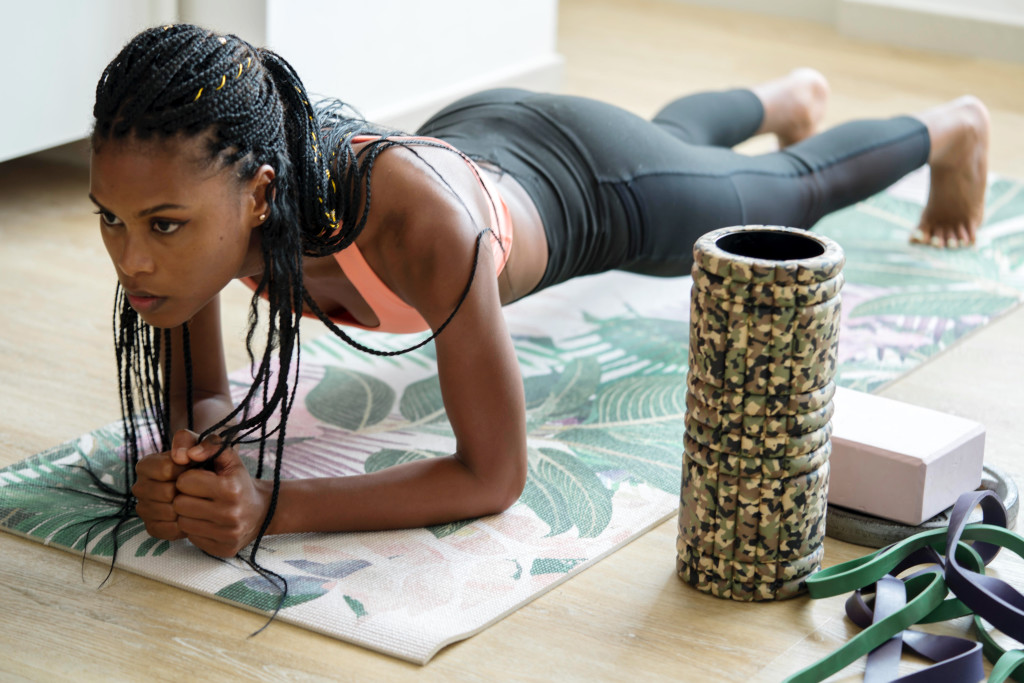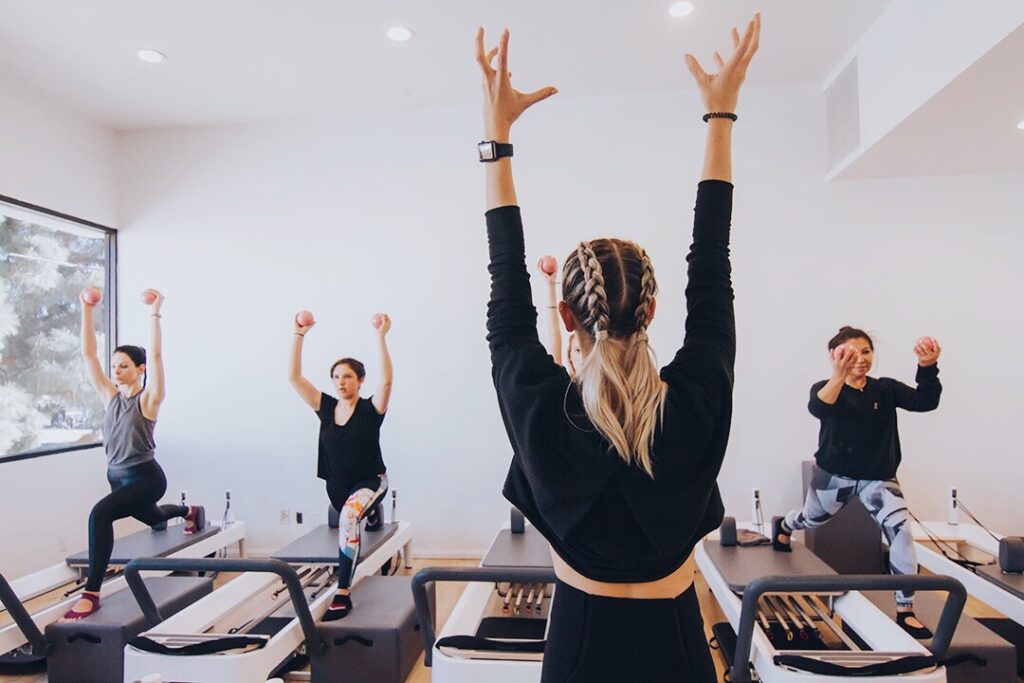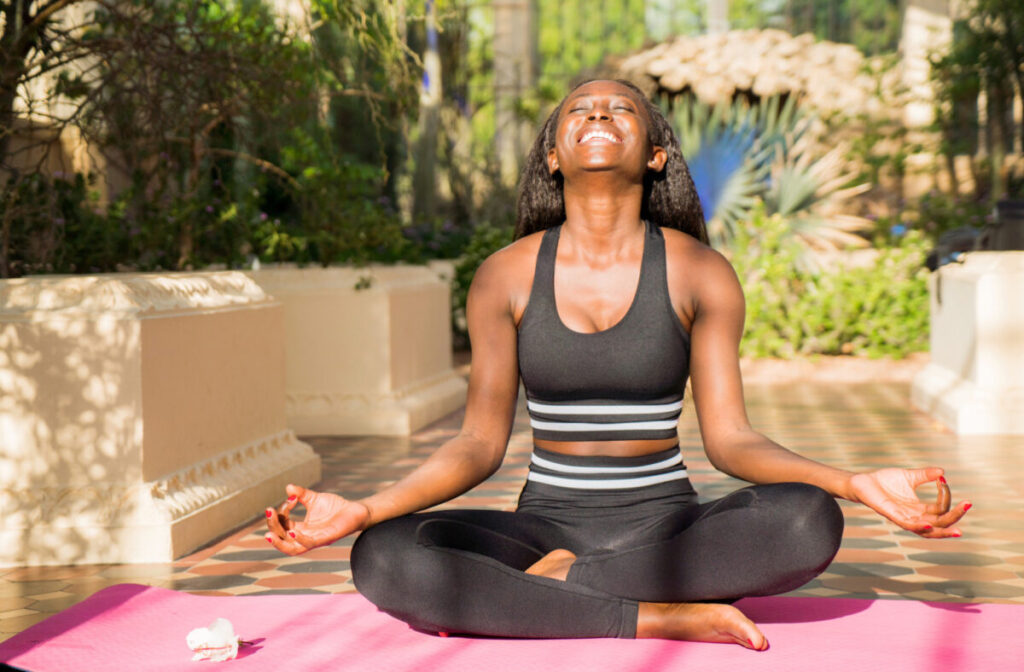The benefits of a little yoga, pilates and tantra can transform more than your body
[dropcap letter=”F”]ind Your Center.A term we’ve heard over and over, and while most of us picture the words coming from a yogi sporting a man bun in a hot yoga class while we sip on our latest cold pressed kale spinach juice, the term itself holds more depth.
According to Andrew Olendski at Tricycle.com, finding your balance is, “the midpoint between sense desire and aversion.” This allows one to reach a state of equanimity where the mind is evenly balanced. He goes on to add, “It is fully engaged with experience, but neither favors nor opposes what is happening. We are aware of what is arising and passing away without any inclination to change it into something else. When this equanimity is coupled with a mind that is both tranquil and alert, we have found the still center of the mind.”
Finding your center is deep! From Buddha to yogis, life coaches and fitness trainers, what’s more important than the words is the term that acts as a reminder to be in touch with the flesh and bones that house our entire selves—and encourage us to effort to the point of quieting the chaos of our minds. From stretching to some much needed sexual healing, yoga has a multitude of benefits from fitness to sensual pleasure.
Yoga
Yoga has often been referred to as a practice meant for hipsters and people who don lengthy arm hair (hey, no judgment—you do you). But yoga is a practice that dates back 5,000 years.
Yoga is one of the practices that came from the Indus valley civilization around 3000 BCE. Beginning with what is called hatha yoga, the asanas (postures) were developed by Indus-Sarasvati. Whether it was used in connection to Indian wrestling or the birth of the guru, yoga’s origin story is muddied with multiple groups who each claim to be the originators of the practice. What matters more is not who started it, but that it stems from ancient ideology and has continued to evolve over the years.
Google Arts and Culture delves into the history of yoga. “The word yoga was first mentioned in ancient sacred texts called the Rig Veda. The Vedas are a set of four ancient sacred texts written in Sanskrit. The Rig Veda is the earliest amongst the vedas and is a collection of over a thousand hymns and mantras in ten chapters known as mandalas, which were used by Vedic age priests.
Yoga was refined and developed by Rishis (sages) who documented their practices and beliefs in the Upanishads, a huge work containing over 200 scriptures. Yoga is amongst the six schools of philosophy in Hinduism, and is also a major part of Buddhism and its meditation practices. You can find out more about the history of yoga here, from the Shri Yogendra Museum of Classical Yoga – the world’s first museum dedicated to yoga.”
From improving flexibility, slowing and managing the effects of age and arthritis, gaining mental clarity and improving overall self, yoga is good for a great many things. With a variety of ways to practice yoga, finding a routine that suits you and your body is easy if you’re willing to try a few options until you land on the one that feels just right.
Preparing For Yoga
- Find a quiet, uncluttered room with space for a mat. Go into a room that feels comfortable for you. If you can go outside, that’s even better. Find a space in nature where you feel connected to the earth. Water elements always work wonders!
- Roll out your yoga mat with at least 2 ft (0.61 m) of room around it. Unroll your mat and make sure it’s away from any furniture or walls so you don’t hit them if you decide to do some long stretches in any direction.
- Deep breaths. Yoga involves breathing exercises that force you to pay attention to your breath. Deep breathing can help you relax almost instantly, which can help relieve stress and anxiety.
- Incorporate plants into your meditation space if you’re inside. Plants can improve your mood.
- Place any spiritual trinkets or totems you like to meditate with nearby. Burning incense has been shown to reduce anxiety and depression. Choose a calming scent that you enjoy like lavender, nag champa, or jasmine
Yoga Stats
- About 36 million Americans practice yoga (that’s up 21 million since 2008)
- It was forecast that over 55 million people would practice yoga by 2020 (guessing that number increased thanks to the pandemic).
- 14 million people over the age of 50 are doing yoga (hello Thai Chi).
- Historically, women who practiced yoga were sexually objectified (shocker).
- About 44% of yoga practitioners practice yoga 2–3 times a week.
- A staggering 89% of US yogis practice yoga 1–5 hours a day on average.
- A vast majority of yoga practitioners (94%) do yoga for wellness-related reasons.
- 59% of US yoga practitioners believe that yoga helps them sleep better.
- Every year, Americans spend $16 billion on yoga classes, equipment, clothing, and accessories.
Pilates
Pilates is named for its founder, Joseph Pilates. He was born in 1880 in Germany and battled being sickly all throughout his childhood which led to his determination to be strong and healthy. From body building to modeling for art classes, becoming an expert diver and skier, he inevitably left Germany for England and at age 32 invented an apparatus now known as the Pilates reformer. By 1923, Pilates had moved to New York where Americans would become familiar with his reformer and the power of the workouts.
Pilates is one of the more sought after workout regimes for its ability to tone and firm core muscle groups like abs, lower back, legs and butt. The workouts are challenging and graceful, but it’s not a cost effective workout for the average fitness lover. The equipment is often only available inside a Pilates studio (unless you’re willing to spend $1000-$4200 for your own reformer). The deterrent of doing pilates at a gym is the memberships are pricey—some to the tune of $200+ a month on average (that’s $2400 per year so you’re better off just buying your own machine at that point and downloading a pilates mobile app).
That said, in spire of the associated expenses, Pilates is great for having enhanced muscular control of your back and limbs. improved stabilization of your spine, and a very fit physique.
Preparing For Pilates
- Stretch it Out. Before you stretch, move a little. Take a walk, do some dishes, rotate your arms a bit, climb some stairs. Just for 10 minutes or so, to get the blood flowing. Hold each stretch for about 30 seconds. Stretching shouldn’t be painful, but the tight, sore areas usually need a good stretch the most, maybe even a double set. Just keep it gentle and don’t bounce or push too far.
- Do Some Mental Workouts. Being mentally prepared can make all the difference.
- Be Flexible. Aim for your own personal best, and be ready to adjust any exercise to your own needs and limitations.
- Get Psyched. Think about how nice it is to feel more limber and stretched out. Then consider the rewards of a stronger core, better posture and a fit, toned body.
- Use The 10-minute Rule. Tell yourself that you will make it to class and get through 10 minutes, at least. Then, if you are really too tired, you’ll allow yourself to stop.
Tantric Yoga
Tantric yoga is known for the sexual benefits, but the word tantra actually means technique. Technique as in improving your ability to move, feel, be fully aware and reach a level of enlightenment through various practices, breathing techniques and patience. And yes, that mastery of technique will undoubtedly improve your sex life when utilized correctly.
“This practice brings together spirituality and sexuality and emphasizes the importance of intimacy during a sexual experience,” says WebMD.com.
Tantra is about reaching a heightened sense of sensuality, which enhances sexual pleasure. “The practice intertwines spirituality, sexuality, and a state of mindfulness. It encourages a sensual experience that may be experienced alone or with a partner. The goal of tantric sex is to achieve spiritual or energetic contact during a sensual experience. This practice is slow and the aim is not always to achieve orgasm. Instead, it’s about feeling a connection either to your partner or to yourself that’s both intense and enlightened. It includes breathing, sounds, and movements to activate sexual energy.”
Much like anything worthwhile, the benefits of taking ones time with or without a partner is critical to understanding what our individual bodies need. This is true in fitness and in sex. Utilize positions, breath work and everything tantra offers to really hone into your bodies deepest desires.
Preparing for Tantra
- Meditation. Whether you’ve practiced meditation before or not, this simply means taking a moment to be aware of your surroundings. Use your senses to really absorb everything going on around you.
- Breathing. Inhale deeply and slowly, then exhale and empty out your lungs. Repeat this until you have rhythm. The goal with tantric breathing is to breathe deep enough to start to feel sensation in your sexual organs.
- Movement. Lay flat on your back and let go of tension. As you breathe, arch your back and lift up your pelvis. You can repeat this to create a rhythm and feel yourself letting go of stress and starting to connect with your body and emotions.
- Many couples practice tantric sex to feel connected to their partner on a higher level. Tantric techniques help to form close, intimate contact and allow you and your partner to explore each other’s bodies. You both can discover what you really like and you can teach your partner along the way.
As avid believers in yoga practices (including tantric yoga—with or without a partner), the benefits far outweigh the modest discomforts of getting started. In a world brimming with anxiety, depression, and stress, fitness is known to be a huge asset in helping you find balance physically, emotionally and mentally. The breath work done in the above three yoga practices can help bring you to the present moment—and that is where we find true inner peace.
May you explore the different practices and learn as much as you can about the power of being present. Remember to be patient with yourself as you try new positions and stretches, including being patient while you master the art of breathing.
Yoga, like anything, has a steep learning curve. It’s less about you being perfect and more about you connecting with your own bodies.
“I face challenges on a daily basis. And one thing I truly believe in, is that obstacles and failures have taught me lessons. I have never really lost anything, either I have succeeded, or I have learned from whatever mistake I’ve come across.” — Massy Arias
Suggestions | Yoga + Fitness Apps
- Asana Rebel
- 7M Workouts for Women
- Peloton
- iFit
- Sweat
- Hipcamp, Empowered by Massy Arias










